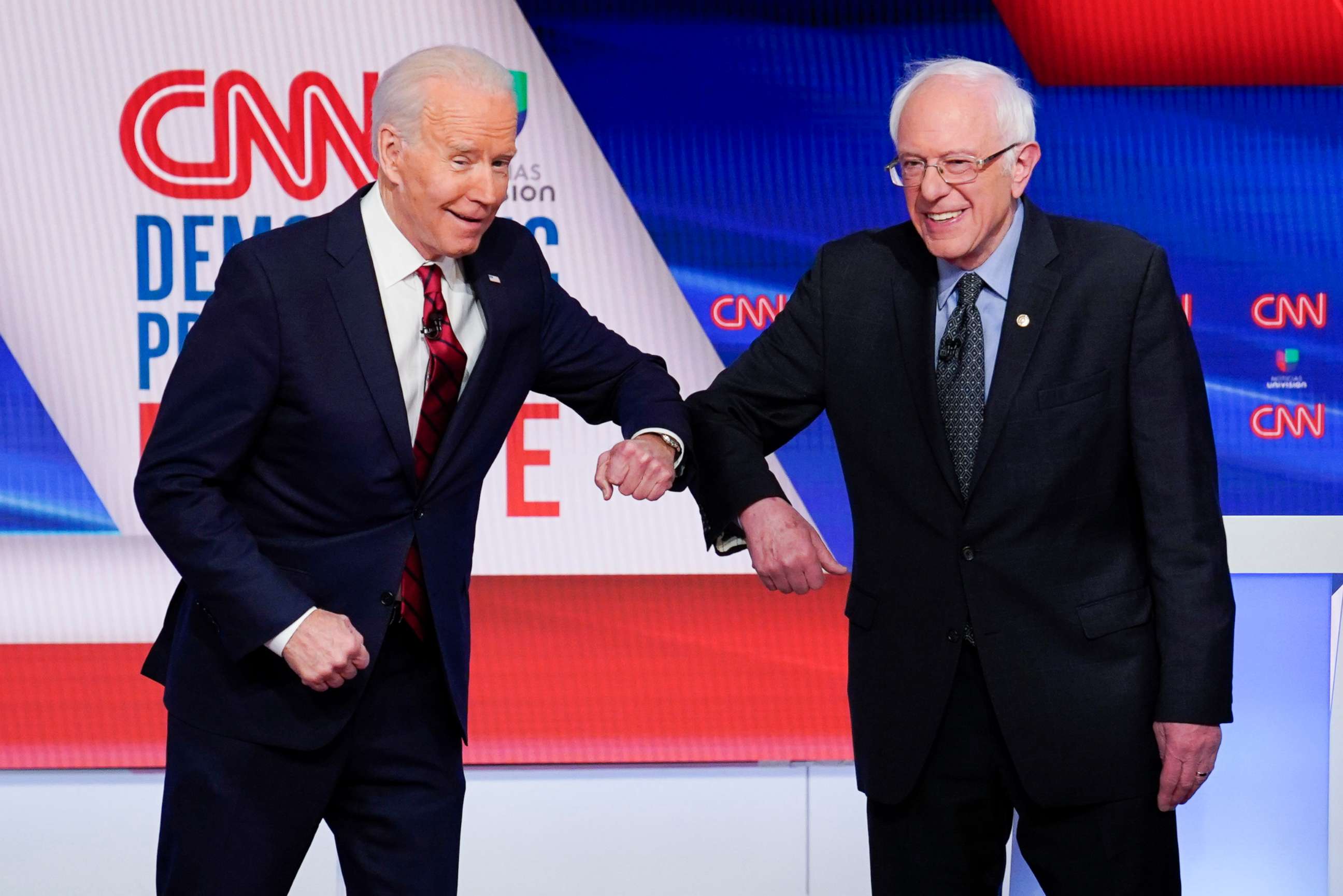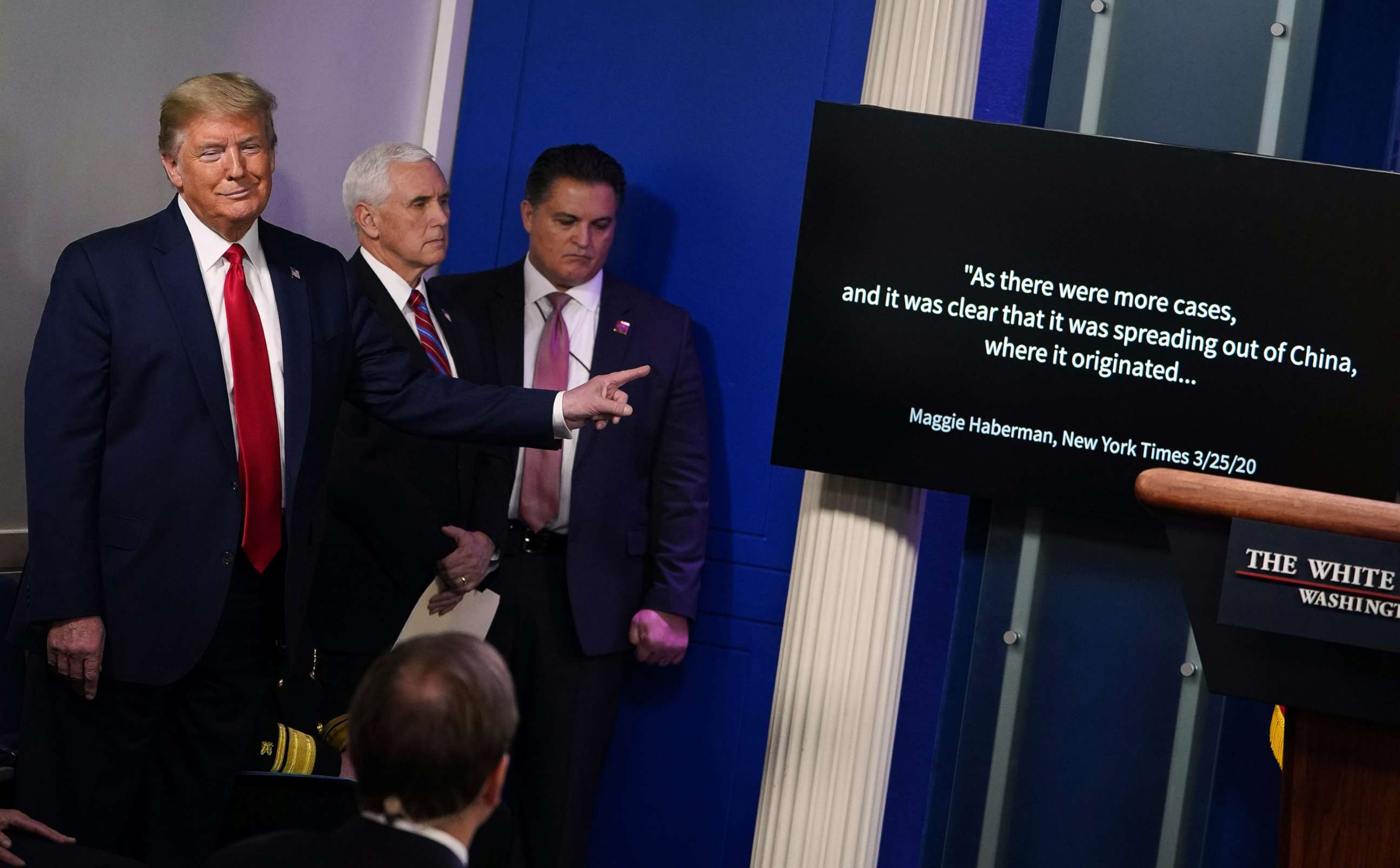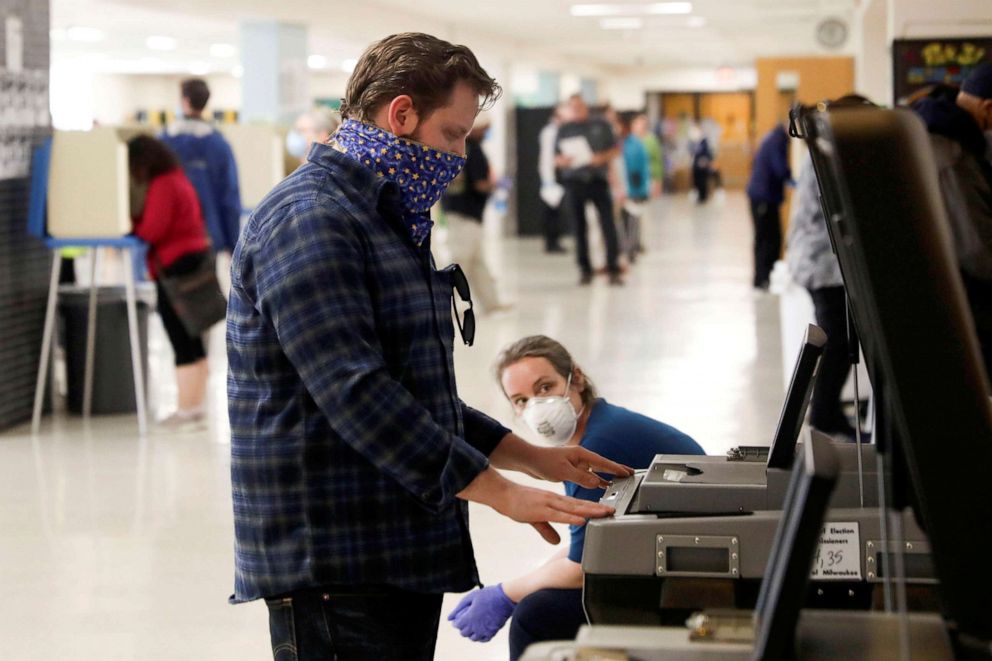The Note: Democrats are trying to learn some lessons from 2016
Sanders' decision to endorse Biden was different than how he bowed out last time
THE TAKE with MaryAlice Parks
Forget waiting until just days before the convention and risking the possibility of even virtual boos from his delegates again, Sen. Bernie Sanders’ decision to endorse former Vice President Joe Biden on Monday was wildly different than how he bowed out last time around.
This time he tore off that bandage just a week after ending his campaign and months before primary voting actually wraps.
The former vice president too made big moves and seemed to be taking proactive steps to work with Sanders and his team to bridge party divides. The idea of creating six policy "task forces," with representatives from both camps, allows Sanders’ and his voters to have a continued seat at the table and be heard, at least in theory for now, on key policy issues.
“I’m going to need you to govern,” Biden told Sanders during their joint livestream and in doing so he gave the long-serving independent senator legitimacy and deference that many party Democrats have withheld.

Will it be enough to bring Sanders’ voters to the polls for Biden? Starting early this spring will likely help, but really who knows with Election Day so far off.
Sanders has never completely controlled his movement either. Does any politician? Voters are not drones and in the coming days and weeks, there will be even more scrutiny on what his former staffers and surrogates say online and whether or not they offer encouragement or refuge for naysayers.
It helps that Biden and Sanders have always respected and been friendly to each other. They seem cut from similar cloth.
In a weird way, this pandemic has made it easier for Biden to give progressives a lot of what they have been asking for -- just an acknowledgment from him that big, structural changes in American society are needed, as they see it, in order to fight income and racial gaps.
Biden said Monday that the crisis has exposed an unfair and unsustainable “substructure” of this economy and that there was an urgent need to make sure the benefits of relief dollars do not make inequity worse. Just saying those statements could move Sanders' supporters to his corner.
THE RUNDOWN with Rick Klein
President Donald Trump confirmed what was apparent -- but should not be ignored -- when he said White House employees helped selectively edit news coverage to leave the impression that he acted early and decisively in confronting the threats posed by COVID-19.
“Everything we did was right,” Trump told ABC News Chief White House Correspondent Jonathan Karl, after airing the video from the briefing room Monday afternoon.

The president is using taxpayer resources to make political points, on top of the swipes he personally takes at Biden, House Speaker Nancy Pelosi and other Democrats.
Trump is making clear that he sees political value in warring with the press and flaming perceived enemies, even as Americans continue to die in large numbers, and the nation’s economy is largely shut down.
To that last point, the president is having a grand constitutional debate with himself. His assertion that a “decision to open up the states” belongs to a president has no readily evident legal backing -- notwithstanding Trump’s vague claim that “numerous provisions” give him that power.
Just a week ago, Trump himself said he did not want to order states to shut down commerce, saying there was “a constitutional problem” with taking such a step.
Now, the president is suggesting he might demand open states that he never ordered shut. That’s playing out in the middle of a deadly stretch of the COVID-19 crisis, and even while governors point out that there’s no national testing program to determine whether and when the threats have subsided.
“I have the ultimate authority,” Trump said Monday, saying that he is working on guidelines that would open the country up “ahead of schedule.”
Trump has long since proven that not even a national crisis shakes his absolute refusal to accept critiques of his leadership. Rewriting recent history is bad. Believing it could prove more dangerous.
THE TIP with Kendall Karson
Last week, Democrats were served with one loss after another with back-to-back Supreme Court rulings siding with Republicans to force an in-person election forward amid a pandemic. But a week later, Democrats won. In a state Supreme Court race, for a seat on the very bench whose conservative majority pushed to hold in-person voting on Tuesday, Wisconsin voters picked liberal challenger Jill Karofsky over Trump-backed conservative Justice Daniel Kelly for a 10-year term.
Karofsky's win, boosted by higher turnout -- despite the coronavirus threatening the election and even as Democrats lashed out at Republicans for attempting to suppress the vote -- was a much-needed signal for Democrats ahead of November. In the absence of a competitive Democratic primary, Karofsky outlined a path for Democrats on how to take back a crucial piece of their blue wall.

In 2016, turnout shredded previous records when 2.1 million voters showed up at the polls for the spring election and parsed through competitive primaries on both the Democratic and Republican sides. While this cycle's total turnout is expected to fall short of that record, there are some bright spots for Democrats.
In Milwaukee -- a Democratic bastion in the county that shares its name, which is leading the state in confirmed cases of and deaths from COVID-19 -- over 202,000 voters cast their ballots, including nearly 170,000 by absentee, compared to 2016's 195,057. But in order to not repeat the mistakes of 2016, when Wisconsin ended the year with some of the state's lowest turnout in the general, Democrats will need to sustain that enthusiasm through the fall.
ONE MORE THING
The top super PAC backing presumptive Democratic nominee Joe Biden is continuing to bombard President Donald Trump on the airwaves with a new ad set to start running in key battleground states on Tuesday targeting the president’s coronavirus response.
THE PLAYLIST
Tuesday morning’s episode features ABC News Chief White House correspondent Jonathan Karl, who examines how President Donald Trump views Dr. Anthony Fauci, as he weighs getting involved with states’ plans to reopen. Then, ABC News Chief National correspondent Matt Gutman examines how antibody testing could aid in the economic recovery. And, ABC News Deputy Political Director MaryAlice Parks tells us why Bernie Sanders moved quickly to endorse Joe Biden. http://apple.co/2HPocUL
WHAT YOU NEED TO KNOW TODAY
Download the ABC News app and select "The Note" as an item of interest to receive the day's sharpest political analysis.
The Note is a daily ABC News feature that highlights the day's top stories in politics. Please check back tomorrow for the latest.




